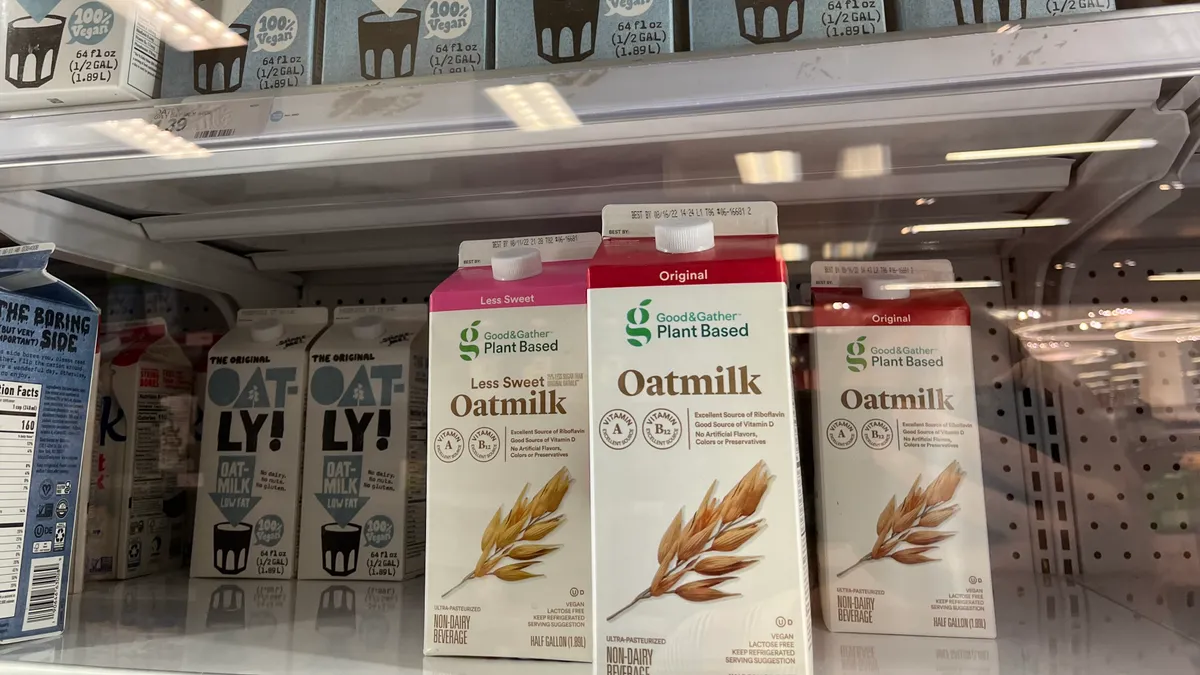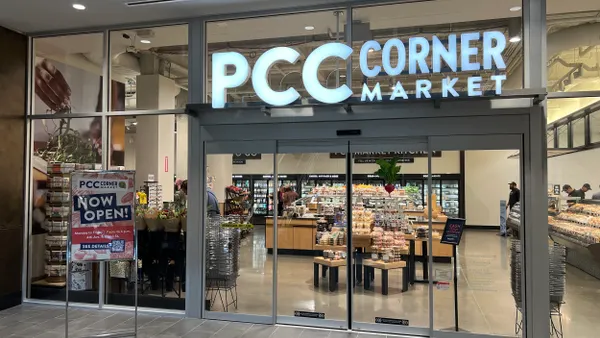Dive Brief:
- Private brand sales are continuing their double-digit gains in 2023 with strong first-quarter results, posting both the same sales increases and greater market share in both dollars and units, per new Circana findings reported by the Private Label Manufacturers Association. Circana, the new name of the recently merged IRI and NPD, looked at both food and non-food sales in all outlets.
- Across U.S. grocery channels, store brand dollar volume in Q1 increased 10.3%, nearly twice the 5.6% gain of national brands, compared to the same three-month period a year ago.
- “The Q1 results are particularly impressive since they are compared to 2022 sales figures, which were historically high for U.S. store brands,” PLMA President Peggy Davies, said in a statement.
Dive Insight:
The takeaway from PLMA’s new report is that private brand sales continue to outpace national brands by a long shot.
Fifteen of the 17 food and non-food departments that Circana tracks showed store brand dollar sales increases in Q1, with double-digit achievers led by beverages (17.1%), bakery (16.8%), general food (16%) and refrigerated (15.5%). Floral, deli-prepared foods and health care saw smaller double-digit increases.
Deli cheese, general merchandise, beauty, frozen foods, produce, deli meat, liquor and health products had smaller increases. Only tobacco and meat recorded a sales decline, at 11.8% and 1.6%, respectively.
For unit sales, six departments improved, led by floral (5%), deli-prepared (2.1%) and bakery (1.8%). The final three were general merchandise, produce and liquor.
Store brands, food and non-food combined, showed market shares gain with dollar share rising to 19.1% and unit share advancing to 20.8% in Q1, up from the same time a year ago of 18.5% and 20.3%, respectively.
Store brands overall also performed better than national brands in unit sales. While unit sales dropped last year, store brands experienced a smaller dip than national brands, PLMA noted, with a similar gap in Q1. PLMA stated this product disparity is due to consumers switching from national brands to store brands.












